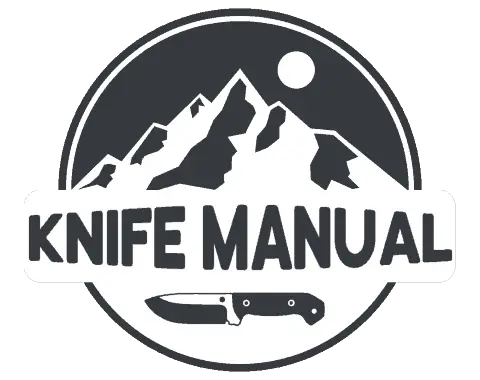If you’re just getting into pocket knives, learning how to close all of the different types of locking systems can seem quite intimidating. Luckily, pocket knife locks are far less complex than you might think, and there are only a few basic ones you need to know about before you can open nearly any knife you find.
There are many types of knife blade locks, but they all operate on the general principle of a piece blocking the blade’s pivot action and releasing when moved out of the way. Depending on the knife, a button, lever, frame section, or another part of the knife can be the method to release the blade.
Once you get it down, opening nearly any knife becomes second nature. Not only is this super helpful in everyday life to not have to think about how to unlock your knife when you want to use it, but it can be a cool party trick or conversation starter.
Table of Contents
Types of Pocket Knife Locks and How to Close Them
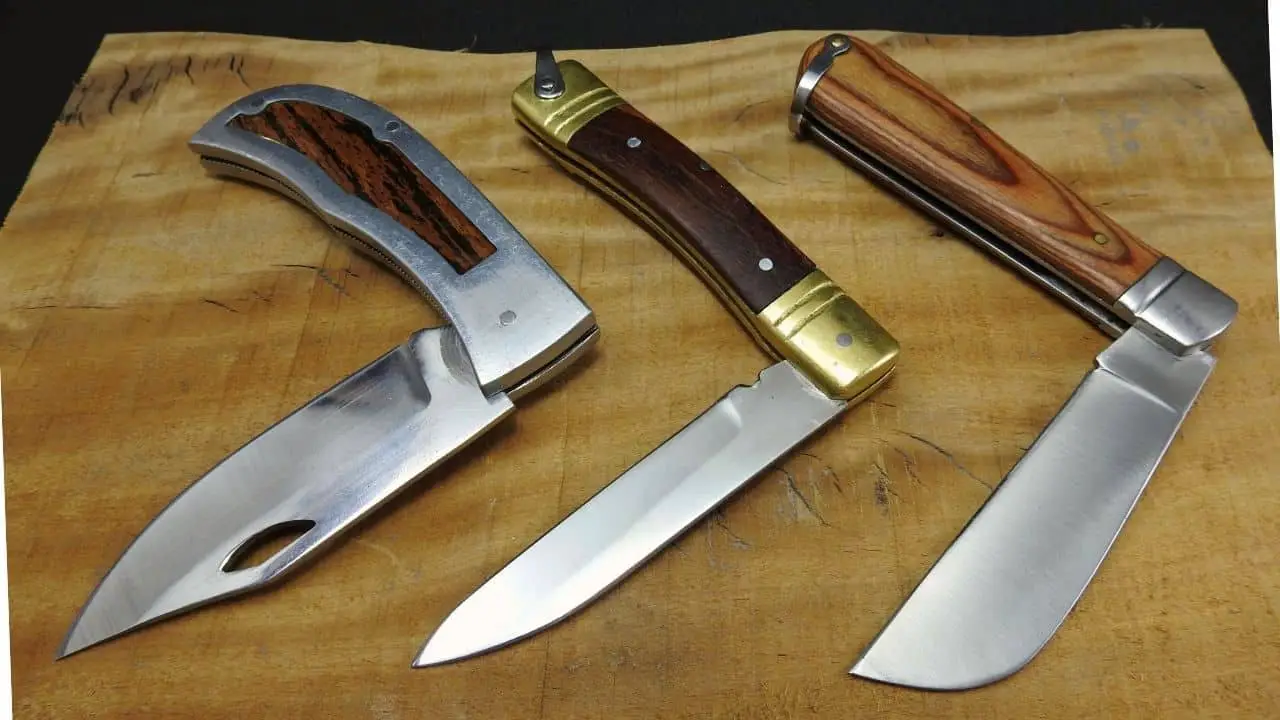
Most knife locks are pretty intuitive to figure out if you know a little bit about how they work and what to look for, so it shouldn’t take you very long to become quite proficient, even if you are entirely new to pocket knives.
Folding pocket knives typically have one of the locking systems listed below:
- Slip Joint
- Frame Lock
- Liner Lock
- Lockback
- Button Lock
- Axis Lock
- Compression Lock
The knife locking mechanisms listed above are relatively standard, but there are quite a few more unique blade locks only used on a few knife models or by single companies. However, nearly any knife lock works on the same principles as the standard locks, so you shouldn’t have too much trouble figuring out any blade lock not covered here.
If your knife is just unable to close no matter how hard you try, make sure to check out my article on reasons why your pocket knife wont close and how to fix them!
If you can open a standard pocket knife blade lock, you can usually figure out nearly any other knife lock quite quickly.
Below I’ll go over many of the most popular knife locks and explain precisely how to close and operate each type. So let’s get right into it!
How to Close a Slip Joint Knife (No Locking Mechanism)
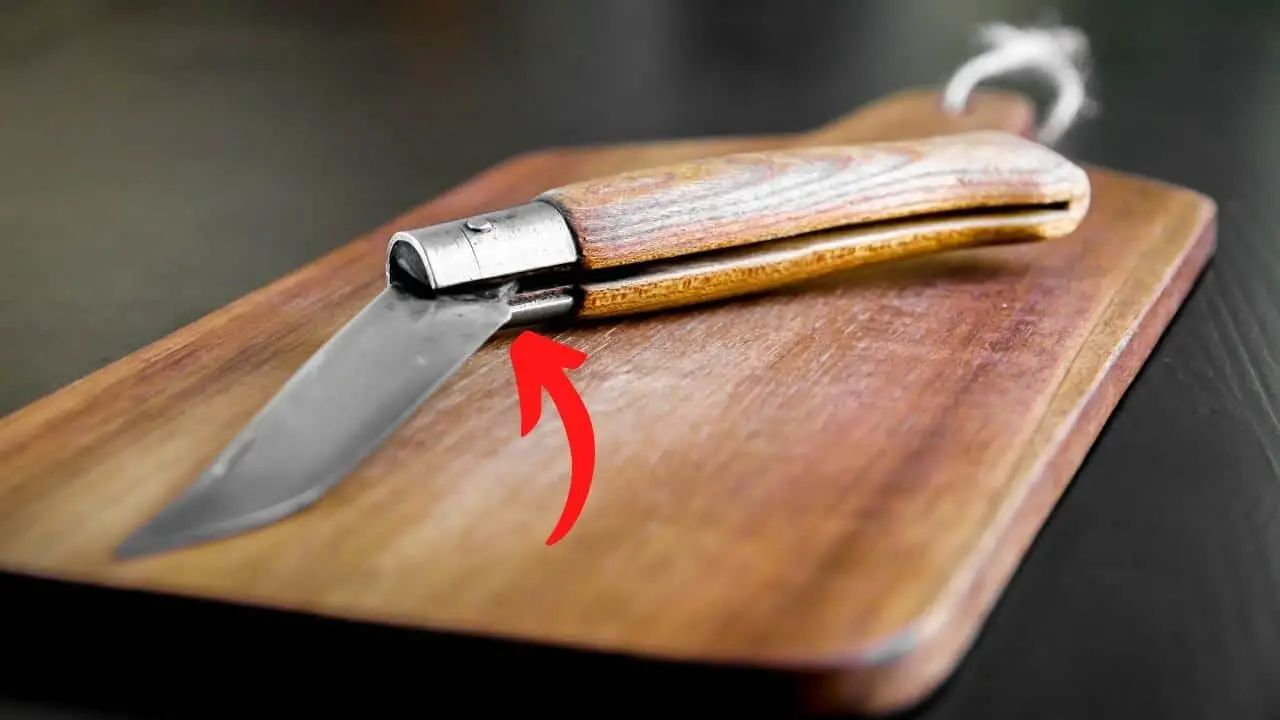
Let’s take a look at the specific motions and steps you need to take to open a slip joint pocket knife properly. As you become more comfortable, you can begin to open your knife with only one hand and much faster.
- Hold the open knife in your dominant hand with the pivot point away from your body and the blade facing upwards.
- Carefully grip the back of the blade with your non-dominant hand (use the nail nick if possible) and apply pressure to the blade until it folds into the handle.
- Make sure you fold the blade as far as it can go into the handle before storing or carrying the knife.
Typically used on traditional style pocket knives, slip joint locking mechanisms rely on the downward pressure applied to the blade by its user to keep the blade from closing.
Slip joint pocket knife blades have no locking mechanism to keep them closed, so when you want to use one, simply lift the blade out of the handle and into the working position.
Nothing is keeping a slip joint knife blade open other than the pressure you put on the blade when you use it, so you must be careful and apply adequate pressure to keep it open. To close a slip joint knife, grip the back of the open blade and fold it carefully back into the handle.
Overall, slip joint knives are some of the most straightforward locking systems to operate, but there is also an enormous potential for harmful accidents, so you must be careful. Any downward pressure on the blade when you’re using a slip joint knife will result in the blade closing, which can be quite dangerous.
How to Close Frame Lock Knife
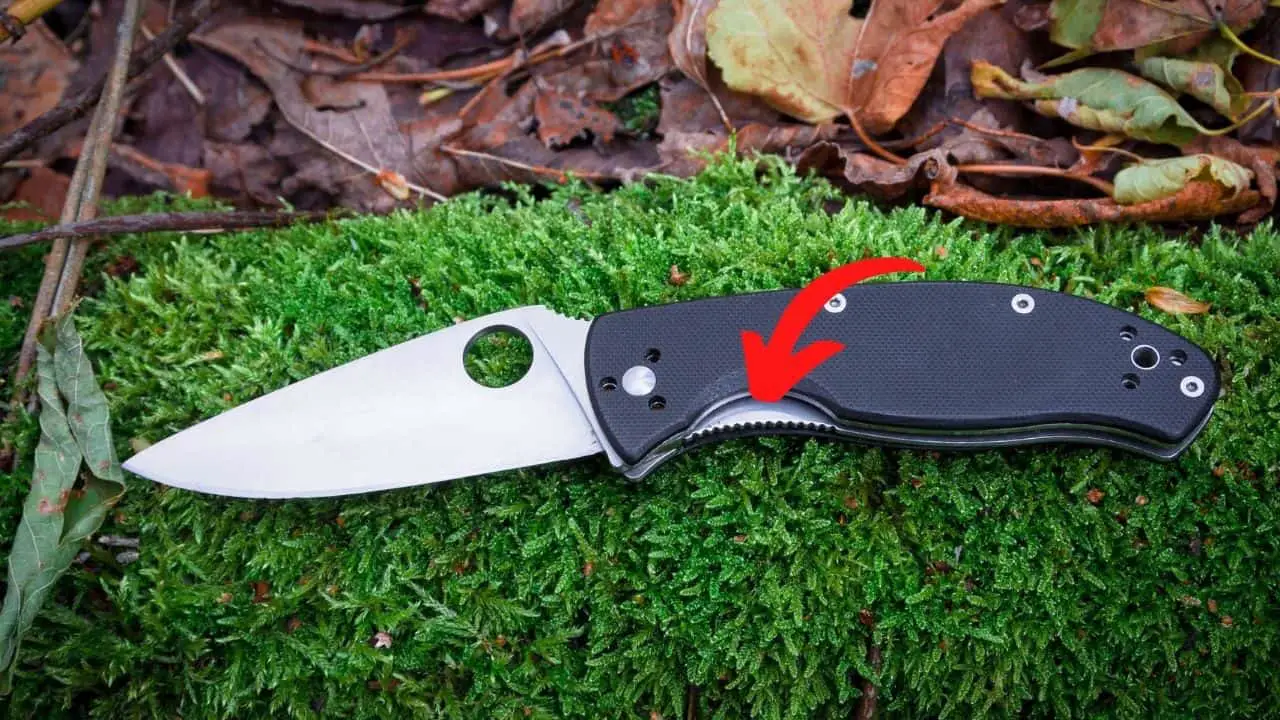
Frame locks are prevalent on many pocket knives, so learning how to close this type of locking mechanism can be extremely useful. Let’s take a look at the specific steps you need to take to close a frame lock pocket knife.
- Hold the knife in your dominant hand with the blade and pivot point facing away from your body.
- Carefully lift your thumb over the knife’s handle and push (or pull, depending on the knife) the frame lock to the side of the handle cavity.
- While still holding the frame section to the side with your thumb, use your index finger to push the blade upwards towards closing.
- Move your thumb away from the handle, and continue using your index finger to push the blade into the handle until it clicks into place.
The frame lock mechanism is a very simple concept that is super easy to open and close, yet it is extremely solid. The piece holding the blade in place when the blade is either open or closed is quite literally an extension of the outer frame of the knife.
To open and close a frame lock, you move a piece of the frame to the side to allow the blade to pivot freely. When you release the portion of the frame, it moves back into place to prevent any knife blade movement.
How to Close a Liner Lock Knife
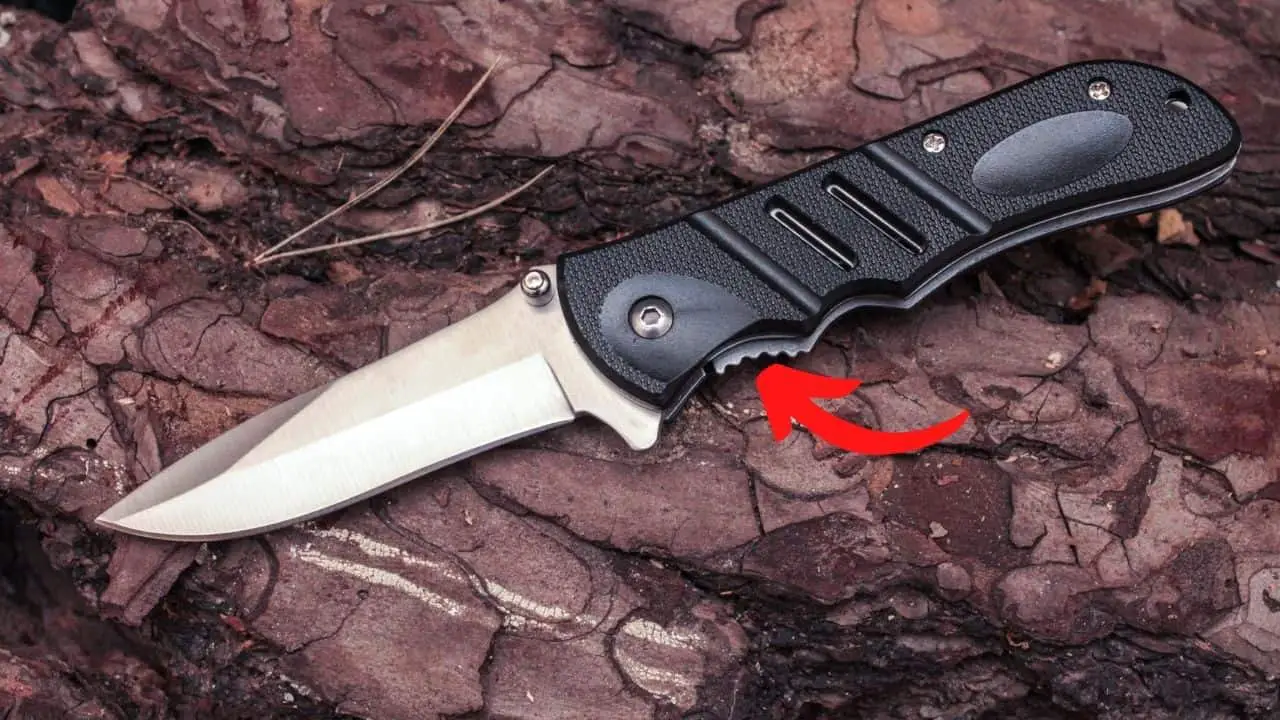
Much like the frame lock, the liner lock is a slightly less robust locking mechanism that appears in a wide variety of knives. Below I’ll talk you through the steps to closing a pocket knife with a liner lock.
- Hold the knife with the blade and pivot point facing outward away from your body using your dominant hand.
- Reach across the handle of the knife with your dominant hand’s thumb and move the liner to the side of the handle cavity.
- While still holding the liner piece to the side of the handle cavity, lightly begin to fold the blade into the handle using your index finger.
- Once you have folded the blade about 1/4 of the way, remove your thumb and fold the blade into the handle cavity until it clicks into place.
A liner lock is nearly identical to a frame lock, but the one key difference is what part of the knife holds the blade when it locks into place. On a frame lock, the piece holding the blade inside the handle cavity is part of the knife’s outer frame, while on a liner lock, it’s an inserted piece that’s not part of the frame.
Because the lock isn’t a part of the frame, the liner lock can be considered slightly less durable than a frame lock. However, both locking systems are incredibly durable and tough, so most people can’t even tell the difference if they use their knives for regular pocket knife tasks that don’t require a ridiculous amount of structural knife strength.
How to Close a Lockback Knife
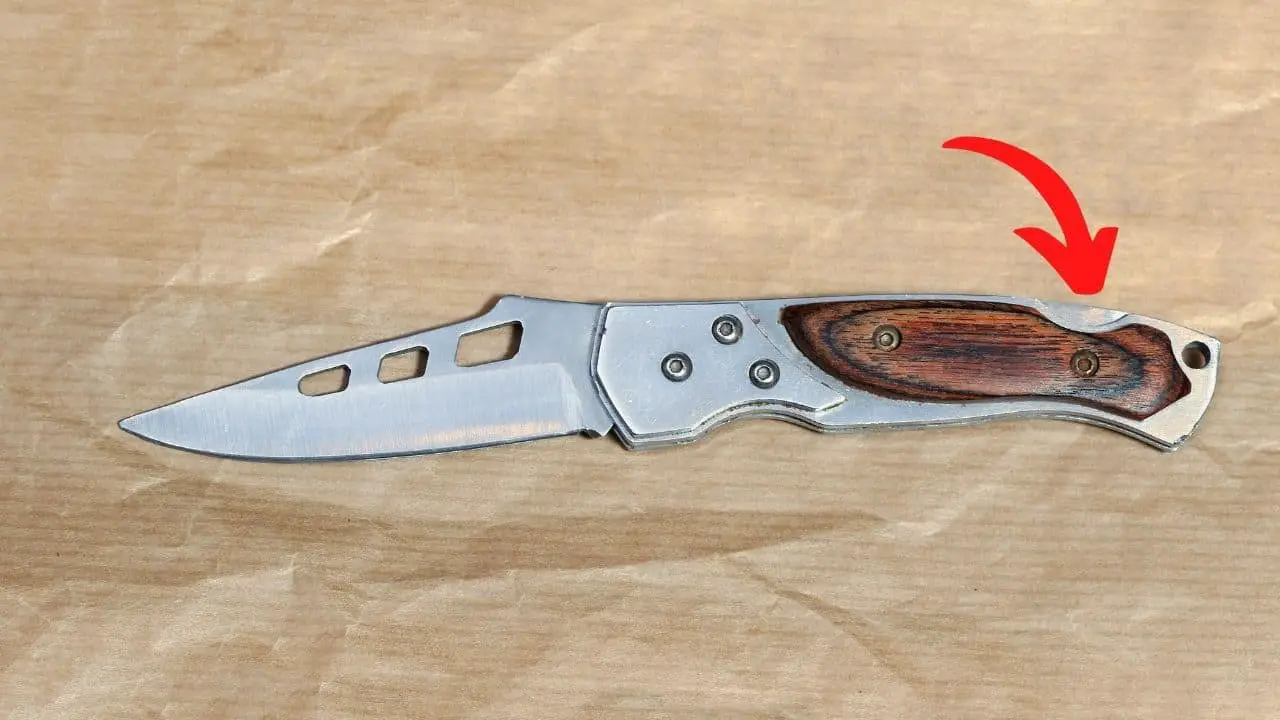
Another widespread and popular locking system is the lockback. While it is still used quite often on folding hunting knives, decorative knives, and many others, it is a little less prevalent than some of the previous systems. Let’s take a look at what motions and steps you need to take to close a lockback knife.
- Hold the lockback knife with your dominant hand, with the blade pointing away from you.
- Use your thumb on your dominant hand to press on the blade release located on the back of the handle near the butt of the knife (It should be an exposed portion of metal that appears to be a part of the knife tang.)
- While holding down the blade release on the back of the handle, use your non-dominant hand to begin folding the blade towards its closed position.
- Let go of the blade release and close the blade until it clicks into place inside the handle cavity.
Typically used on traditional style hunting folders, lockback locking systems are robust and rarely come unlocked by accident. You must put quite a bit of thought and effort into closing a lockback knife, making them suitable for intense tasks that could be dangerous if the blade became unlocked unintentionally.
Lockback knives have a relatively simple locking system, but it is highly reliable. On a lockback knife, a metal piece runs along the handle’s back and holds the blade either open or closed via a strong spring.
When the lock release located on the knife’s handle is compressed, it releases the spring and allows the blade to swing open or closed. The spring firmly holds the blade in place when the release is not compressed, allowing the knife to be used without the fear of unexpected closing.
How to Close a Button Lock Knife
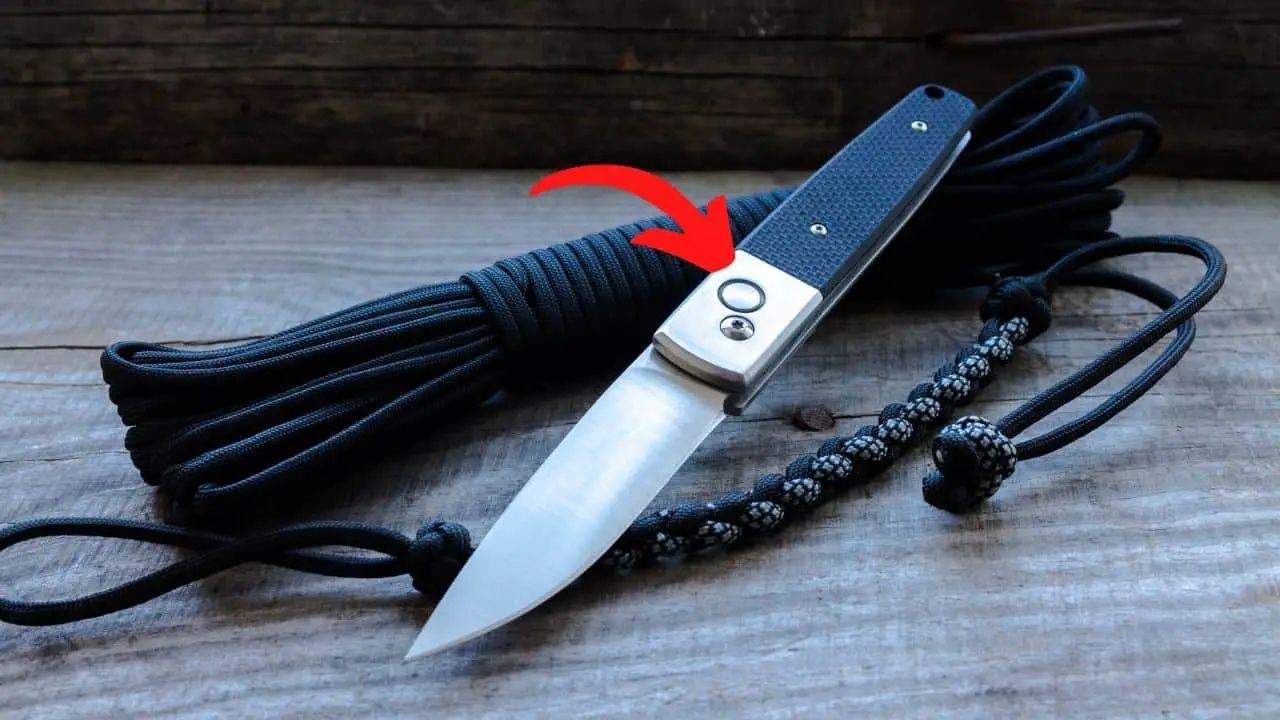
Often found on stiletto style knives or other spring-loaded folders, the button lock is a novelty locking system that many people find desirable and flashy. Let’s take a quick look at the specific steps you need to take to close a button lock knife safely and quickly.
- Begin by holding the knife in your dominant hand with the button release located on the handle facing upward and the blade pointing away from you.
- Use your dominant thumb to press the button release on the handle down firmly.
- While still compressing the button with your thumb, use your other hand to fold the blade towards its closed position.
- Once the blade is closed about 1/4th of the way, release the button and continue closing the blade until it clicks into place in the handle cavity.
Button locks can be excellent because of their quick and easy deployment of the blade, but there are some safety concerns you should keep in mind. After all, one single press of a button could deploy the blade inside your pocket or when you’re not expecting it.
Typically used on various switchblades and quick deployment knives, the button lock is a widely liked blade locking system, but it has some flaws. For more information on switchblades, make sure to check out my article on the differences between switchblades and pocket knives.
When you press the blade release button on a button lock knife, it releases a spring that quickly flings open the knife blade. Depending on the spring’s strength, button lock knives can open relatively slowly or at breakneck speeds.
This fast release makes button lock knives illegal or restricted in many areas and can lead to safety and practicality concerns. Make sure to stay safe and use extra caution when closing a button lock pocket knife or switchblade.
How to Close a Bar Lock Knife (Benchmade Axis Lock)
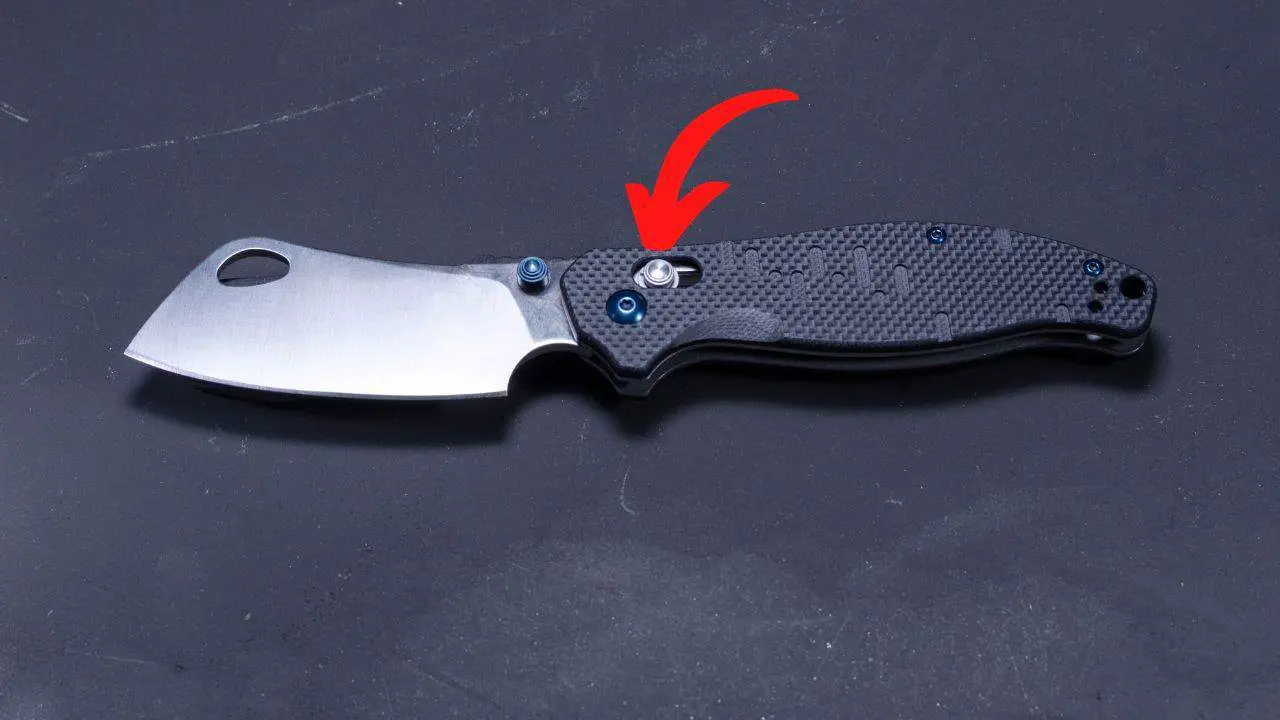
Bar lock knives are very popular on everyday carry knives due to their smooth and quick opening and closing motion. Below I’ll take a look at the specific steps you’ll need to go through to close an axis lock knife safely.
- Hold the knife in your dominant hand with the blade facing away from you.
- Using your dominant thumb, pull back the locking bar (located on the handle near the blade’s base).
- While still holding back the locking bar with your thumb, use your other hand to begin closing the knife blade.
- Once the blade is closed about 1/4th of the way, release the locking bar and finish closing the blade until it clicks into place inside the handle cavity.
Typically found on higher-end or mid-tier pocket knives, the bar lock is a relatively simple yet robust design. While the bar lock is the general name for this type of knife lock, Benchmade has their own patented version (which is the original) called Benchmade Axis Lock.
The bar lock works using a small bar situated inside a slot in the knife’s handle. The bar is spring-loaded and fits perfectly inside an indent in the rear of the blade. When you pull the bar back, it releases the blade and allows it to swing freely. Once you let go of the bar, the spring pulls it into the indent in the rear of the blade to lock the knife either open or closed.
The release bar on a bar lock knife can usually be accessed on either side of the handle, making it a tremendous ambidextrous knife and giving you a little extra functionality if you need it.
Overall, the bar lock (or Benchmade Axis Lock as it is commonly known) is a very durable and good locking system that is very quick and easy to close once you know a little bit about how it works.
How to Close a Compression Lock Knife
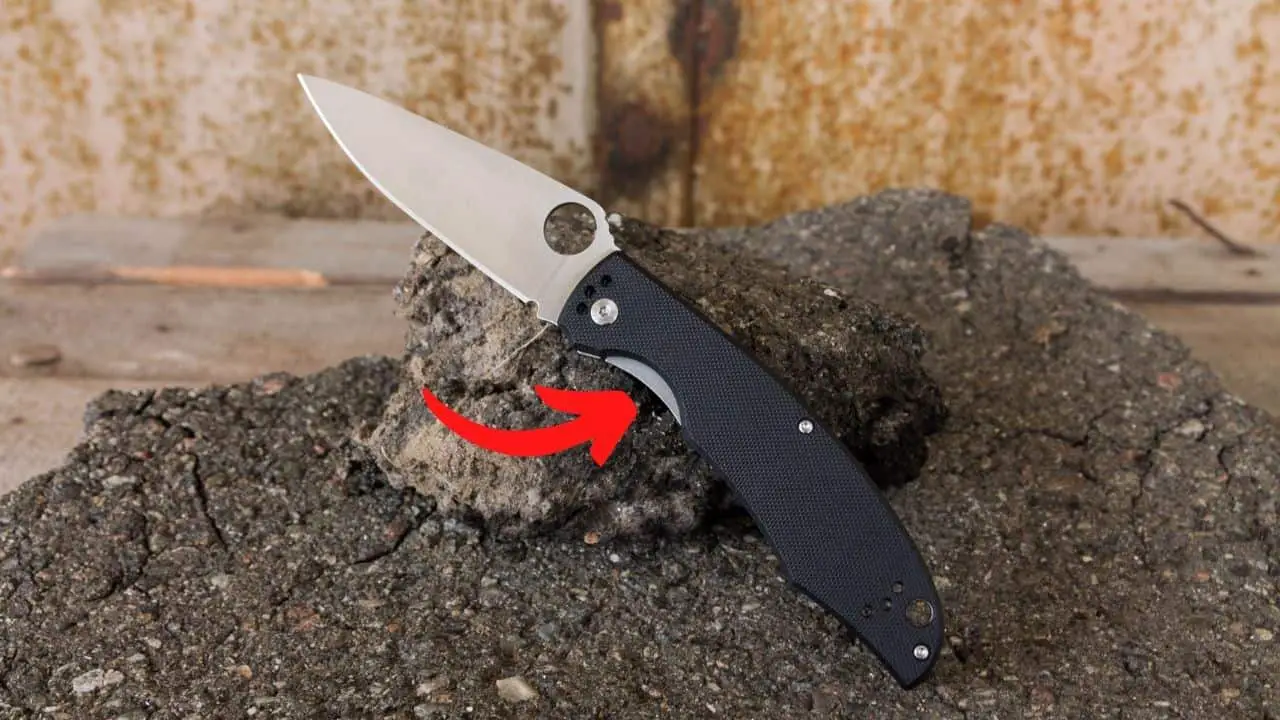
Compression lock knives are SUPER similar to liner locks, but there are a few key differences in how they operate and keep the blade locked in place. Let’s look at how compression lock knives work and how to close them properly and safely.
- Hold the knife in your dominant hand with the blade facing away from you and the handle cavity (where the blade folds into) facing upwards towards you.
- Use your dominant thumb to reach across the knife’s handle and push the liner locking mechanism to the side of the handle cavity.
- Using your other hand, begin to close the blade slowly.
- Once the blade is about 1/4th of the way closed, remove your thumb from holding the liner locking pice, and finish closing the knife until it locks into place inside the handle cavity.
The way that you close a compression lock knife is literally identical to how you would close a liner or frame locking knife. The way you close and interact with a compression locking system is the same as those previously mentioned locking systems, but the knife’s inside mechanics are entirely unique.
The one key difference that differentiates compression locks from similar knives is the notch in the blade’s base and a stop pin inside the handle.
Without getting TOO technical, a compression lock uses a liner inside the handle to hold the blade either open or closed (it’s the piece of metal you push to the side to close or open the knife). When the knife is open or closed, the liner fits perfectly into a notch at the blade’s base. Also, there is a stop pin inside the handle that the liner operates between.
How to Close Other Types of Knife Locking Mechanisms
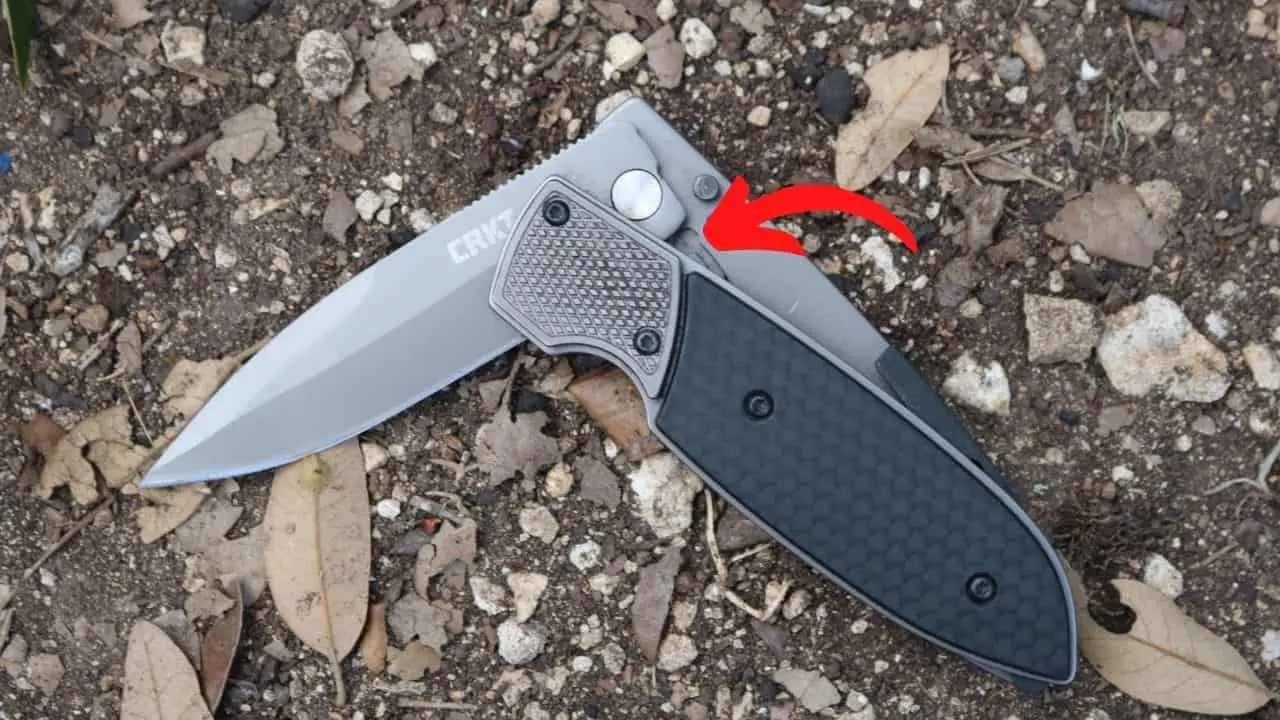
There are literally hundreds (thousands?!) of different blade locking mechanisms out there, and you’ll likely stumble upon a few that I didn’t cover within your lifetime. However, the ones above should cover the vast majority of knives you’ll find, so you should be pretty prepared if you learn the seven locking mechanisms mentioned above.
Here are a few of the other miscellaneous types of blade locking mechanisms:
- External Toggle
- Fulcrum Action
- Rollock
- Snap Lock
- Out-The-Front (OTF)
- Out-The-Side (OTS)
- So many others!
Unique and strang locking mechanisms that aren’t part of the main ones I’ve talked about are usually relatively brand-specific and unusual to find.
There are simply too many to conceivable cover, so the best way to learn how to close these unique locking mechanisms is to look at the brand’s website, talk to the person you purchase the knife from, watch videos online, follow any instructions that come with the knife, or just mess around with it until it closes (make sure to be careful though!).
There are a ton of great pocket knives out there, but here are some of my personal favorites that durable, well designed, and overall just really great blades:
